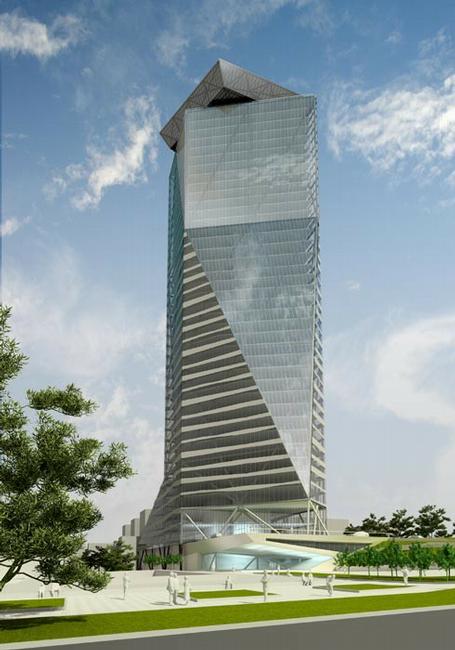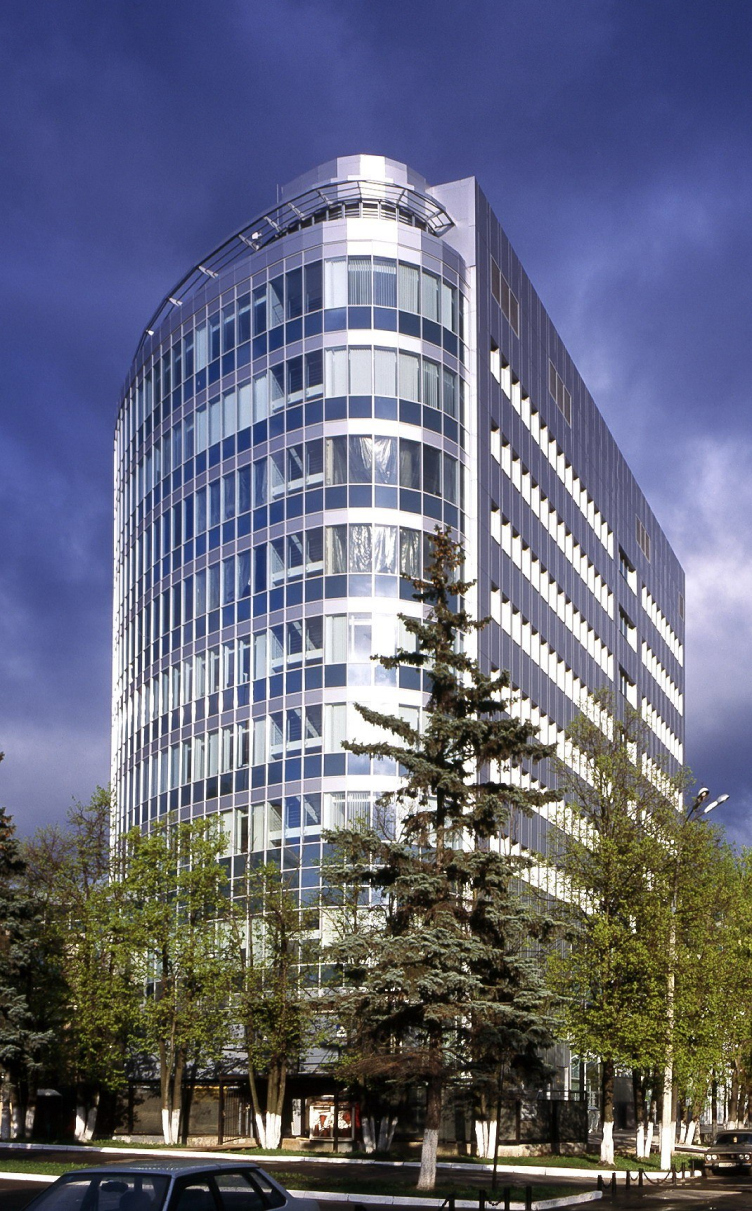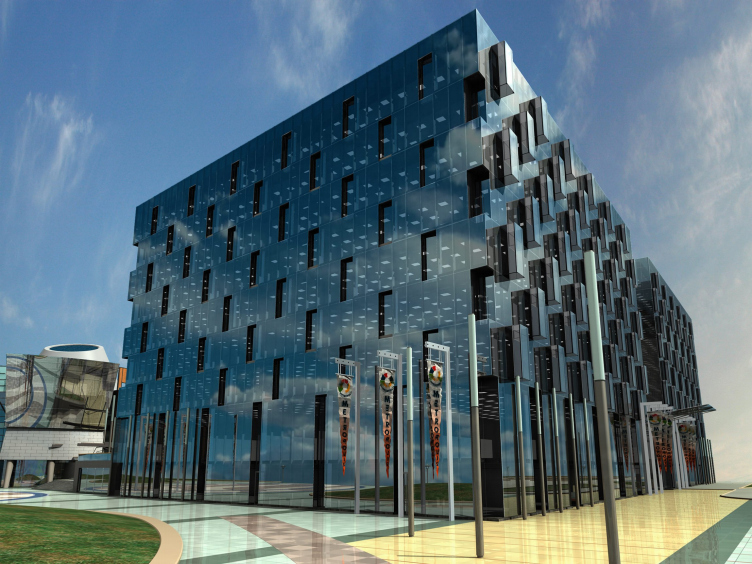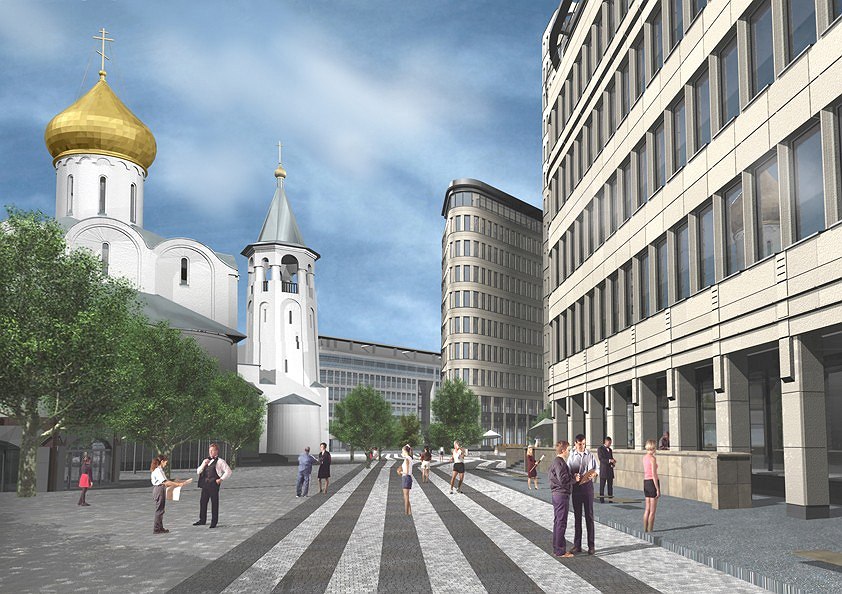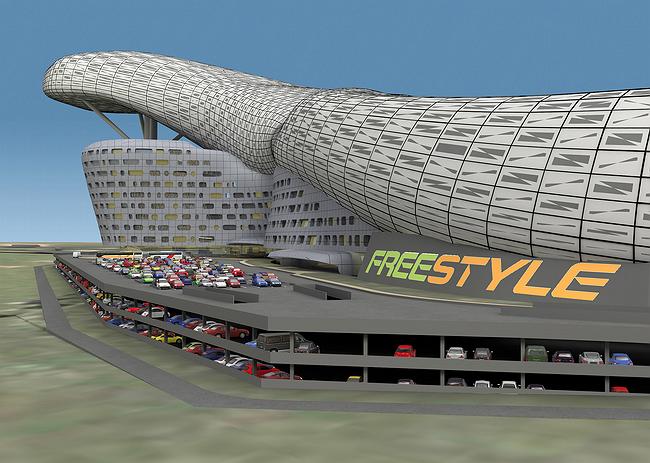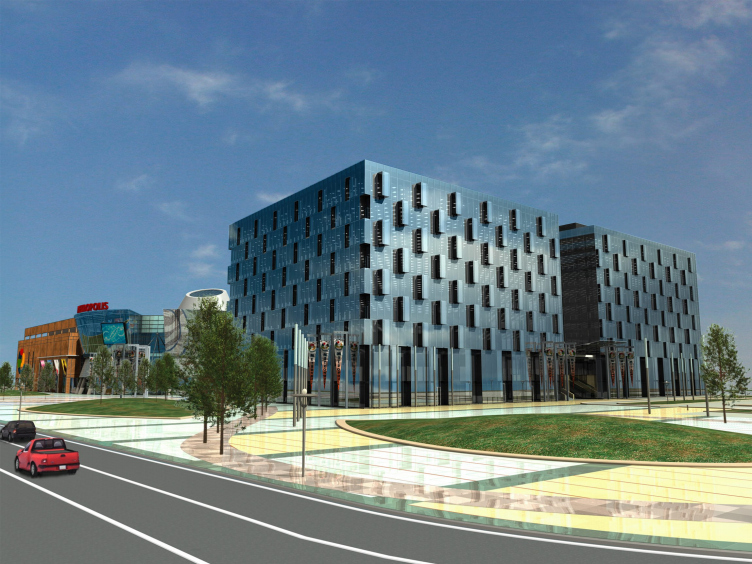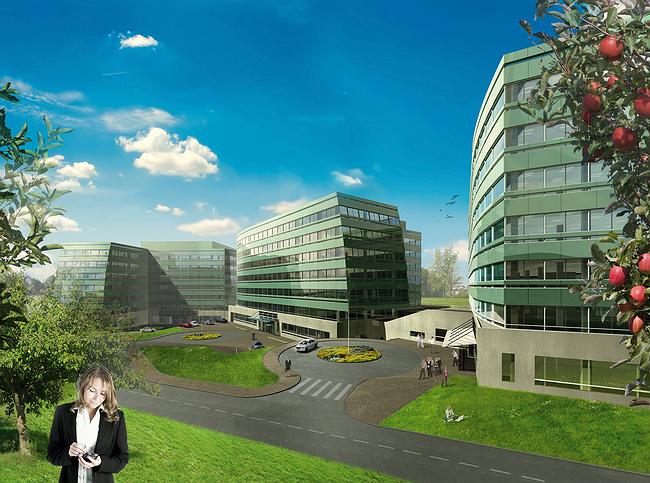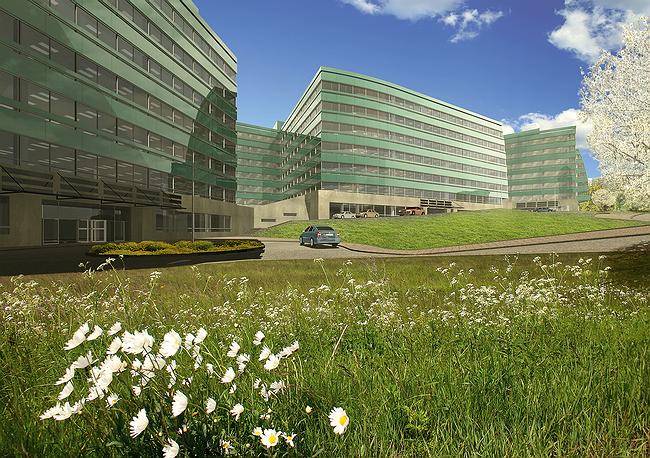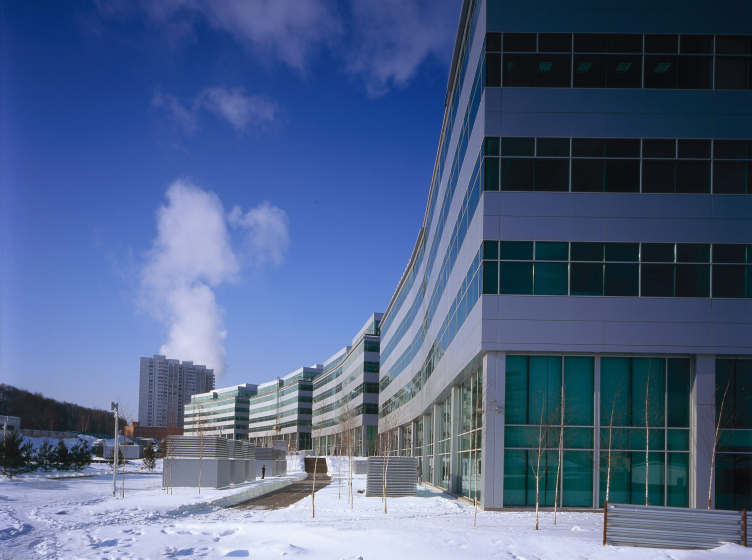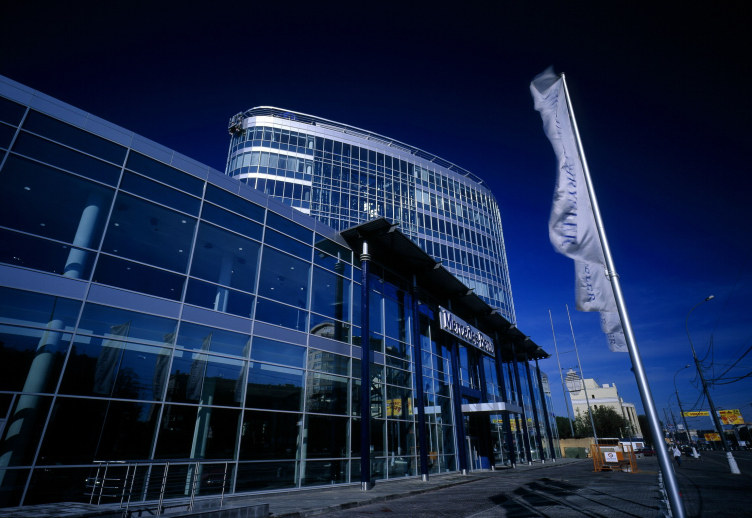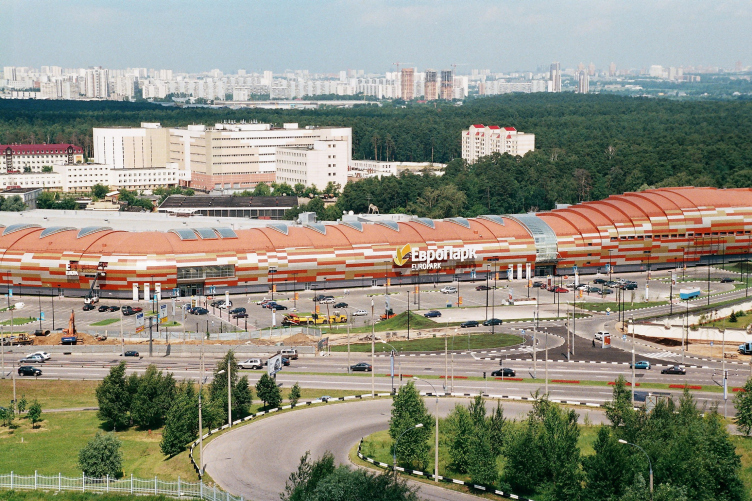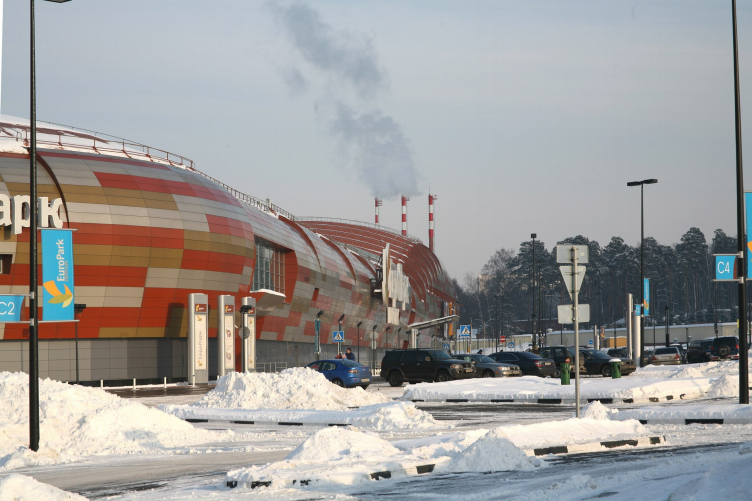Boris Levyant: That’s deliberate. Byuro ABD is not the creative workshop of Boris Levyant. I have a variety of architects working with me, and each of them has, I suppose, his own creative credo.
But your firm has certain general principles?
Boris Stuchebryukov: If we have such principles, they really are general, as in shared, rather than anyone’s in particular. Our system is not for Boris or myself to draw something and then have the rest of the firm develop it. We have principal and leading architects, and they are responsible for designing buildings with their own teams.
So, as head of the firm, you take no part in the creative process at ABD?
B.L.: Usually, no. Only when some extreme, dead-end situation arises and a brainstorm is required. This can happen, but I regard it as a breakdown in our normal way of working.
And you don’t control the final product?
B.L.: I do, but I don’t impose my own vision on the team. There are certain general principles that unite our firm and if they are observed, then I don’t interfere with the design of a building.
So it would be pointless to ask about your firm’s style?
B.L.: Yes, I think so. The term ‘rationalism’ is quite sufficient for me. Our firm creates modern rational architecture. I want it to be clear that extreme buildings such as those by Zaha Hadid and Daniel Libeskind are not what we do and, in all likelihood, not what we shall be doing in the future. For me there are certain fundamental categories. First and foremost, there is scale. Scale is what makes a building appropriate to a city. I do not agree with the principles of contextuality as they are currently understood by the Moscow City Architecture Committee – when historical detailing is required as proof of a fit with a building’s context. If a building fits the scale of the city, then it is appropriate.
Your hostility to the contextual approach is slightly unexpected. You did, after all, work with the man who in the 1980s created the entire architectural programme of present-day Moscow – Aleksey Gutnov.
B.L.: Yes, and for me this was very important professional experience. But it was not at all the ‘contextual approach’ that is today attributed to Gutnov – especially in the form in which we encounter it today. For me the main thing was the experience it gave in creating a team. Gutnov possessed a talent for bringing together in one team people of the widest variety of views and fields of specialization. Creative people, managers, academics, engineers – everyone. And this was the main thing I learned from him. ABD is organized along the same lines. Our teams have a creative department, architects engaged in three-dimensional design, and interior designers. There are managers who manage the legal and administrative aspects of a project. This is very important because creative people are by definition not very good at financial and legal aspects and relations with clients, the city, and sub-contractors. Getting the creative and managerial departments to work together and with engineers and structural engineers are serious tasks for a CEO. ABD now has this kind of teamwork, and I consider this to be my main achievement.
B.S.: To my mind, this is an ideal situation. Architects are liberated from the need to carry out managerial tasks which don’t come naturally to them. They are responsible for designing a building from concept to working drawings and for monitoring construction, but not for administrative functions.
Architects of a creative kind often complain of difficulties in carrying out managerial functions. This is only natural. And yet I would ask the following question. Relations between the city and the client account for a great deal in the design of a building. They set a framework for the design process. Architects and clients, civil servants and contractors all speak different languages; all are very bad at understanding one another. Endless adjustments, negotiations, and re-workings are necessary if a common language is finally to be found. If you liberate your ‘creators’ from all this, how do you manage to find a common language with all your contra-agents?
B.L.: This is the most important part, as it happens. Endless negotiations between people who do not understand one another are not the most effective way of working. The first clause of the agreement we make with any client stipulates the drawing up of a programme/brief. In this we are essentially doing the work of the city zoning regulations – that which Gutnov tried to institute: zoning regulations for each lot. This is essential for the client, but insufficient in itself. There needs to be a common language shared by the client and the architect, and so our next task is to interpret the zoning regulations in the language of business. Both we and the client need a well-thought-out business plan for use of the lot. Unfortunately, it’s not just the city that is insufficiently civilized, but the client as well and, as a rule, developers have no clear idea how exactly they are going to use the land that they have acquired. We have to do their thinking for them. I should say that after these stages have been gone through, relations between architect, city, and client become more efficient.
And at this stage the architect steps in?
B.S.: The architect steps in at the earliest stage. You could say he plays a part in formulating a proper design brief. And if the latter really does meet the client’s needs, then the client will subsequently be much less inclined to interfere in the architectural design. Of course, interference cannot be ruled out altogether. Sometimes the client wants to simplify everything. Sometimes he wants added beauty or sumptuousness. We have been forced to do things we didn’t want to do and not been allowed to do things that seemed right to us. We’ve been through all this. But ideally this system should reduce such interference to a minimum.
Could we come at this from another angle? Buildings designed by ABD are easily recognizable. Their distinguishing characteristic is a European quality. They are things that could find a place in Europe without any need for amendment to meet local conditions. Moreover, this goes equally for your residential interiors, office interiors, and your retail buildings – everything you do. This is the highest level of civilization and modernity, in the sense of modern Western civilization. Could we say this is your credo?
B.L.: Scale, rationality, modernity. There’s nothing more I can add. This isn’t my concern. Creating styles and thinking up interpretations of them is for critics.
Russian consumers prefer everything foreign. Clothes, food, cars – everything. Objects can be imported, but architecture cannot. The creation of a design machine capable of producing a Western standard of civilization here in Russia is, I think, an extremely difficult task. Essentially, all the state structures here and even business itself have been working to this end for the last ten years. You’ve managed to create such a process, and it’s this goal that your design machine is intended to meet. Am I right?
B.L.: Well, that’s the interpretation of a critic.
V.S.: Why do you say ‘a Western standard’? My solo retrospective exhibition at the Polytechnical Museum was entitled ‘Russian Rationalism’ and showed me as a Russian artist belonging to the rationalist movement, an heir to the Russian rationalism of the 1920s. At that time Russian artists and architects did not borrow their ideas and the latter were just as good as, and in many respects better than, anything thought up by their colleagues in the West. The numerous catalogues published prior to and following Perestroika are clear proof of this. To transplant Western civilization to Russian soil is not our objective. Our goal is to rise to a modern standard of civilization here in Russia.
ABD architects. The commercial business center ‘White Square’. Design. The view to Zastavny pereulok (it will be turned into pedestrian street) from Lesnaya Str.

